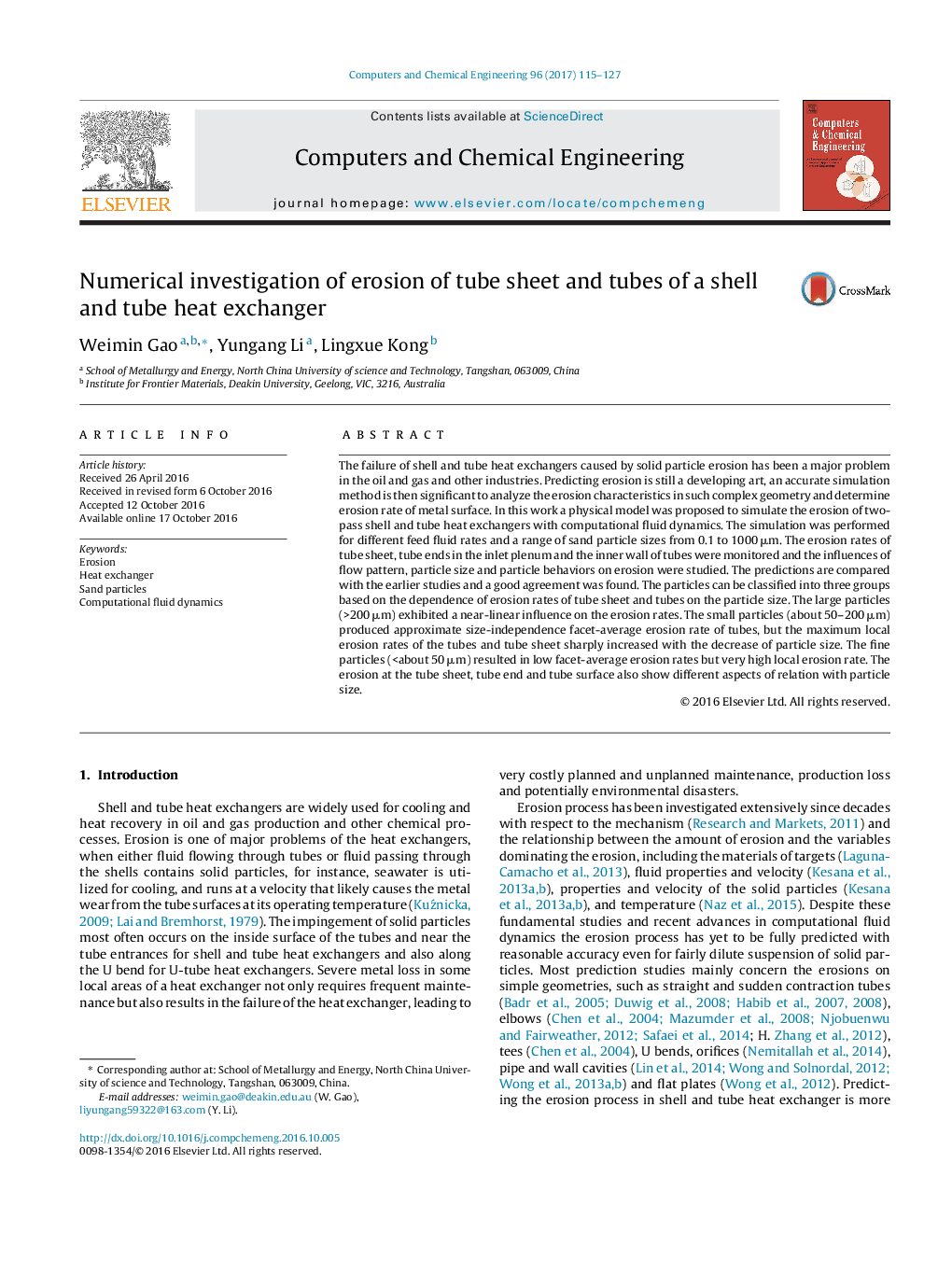| کد مقاله | کد نشریه | سال انتشار | مقاله انگلیسی | نسخه تمام متن |
|---|---|---|---|---|
| 6469249 | 1423748 | 2017 | 13 صفحه PDF | دانلود رایگان |
- A physical model was proposed for predicting erosion in tube and shell heat exchangers.
- The proposed model includes all variables and parameters that influence erosion into simulation.
- Erosions at tube sheet, tube ends and tubes have different relations to particle size.
- Particles were classified into three groups based on the dependence of erosion rate on particle size.
The failure of shell and tube heat exchangers caused by solid particle erosion has been a major problem in the oil and gas and other industries. Predicting erosion is still a developing art, an accurate simulation method is then significant to analyze the erosion characteristics in such complex geometry and determine erosion rate of metal surface. In this work a physical model was proposed to simulate the erosion of two-pass shell and tube heat exchangers with computational fluid dynamics. The simulation was performed for different feed fluid rates and a range of sand particle sizes from 0.1 to 1000 μm. The erosion rates of tube sheet, tube ends in the inlet plenum and the inner wall of tubes were monitored and the influences of flow pattern, particle size and particle behaviors on erosion were studied. The predictions are compared with the earlier studies and a good agreement was found. The particles can be classified into three groups based on the dependence of erosion rates of tube sheet and tubes on the particle size. The large particles (>200 μm) exhibited a near-linear influence on the erosion rates. The small particles (about 50-200 μm) produced approximate size-independence facet-average erosion rate of tubes, but the maximum local erosion rates of the tubes and tube sheet sharply increased with the decrease of particle size. The fine particles (
Journal: Computers & Chemical Engineering - Volume 96, 4 January 2017, Pages 115-127
